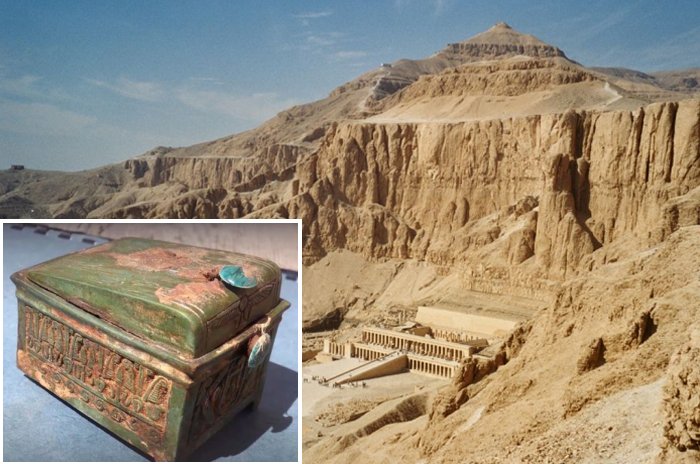Jan Bartek – MessageToEagle.com – The ancient stone chest was well camouflaged and not meant to be found by ordinary people. It has remained hidden from public view for 3,500 years, and now Polish archaeologists have announced the discovery of this mysterious ancient box that may lead to a more significant historical find.
Archaeologists made the extraordinary find in the rubble above the Egyptian site of Deir el-Bahari. Credit: Public Domain
Led by Professor Andrzej Niwińskifrom the Warsaw University’s Institute of Archaeology, Polish archaeologists found the ancient stone chest in the rubble above the Egyptian site of Deir el-Bahari.
Deir el-Bahari has been the site of work for Polish archaeologists for almost 60 years. It started in 1961, when the father of Polish archaeology, Professor Kazimierz Michalowski, led a mission to document and preserve the Mortuary Temple of Hatshepsut.”
See also:
Pyramid Texts Of Ancient Egypt That Charted Journey Of Pharaohs Into Afterlife
Ushabti: Servants Who Worked For Their Owners In Afterlife In Ancient Egyptian Beliefs
Maat – Ancient Egypt’s Most Important Religious Concept
Immortal God Anubis: Lord Of The Sacred Land, Jackal God Of Mummification
This particular archaeological find is of great interest because the artifact was hidden near the renowned Mortuary Temple of Hatshepsut. This indicates an untouched royal tomb could be nearby.
Professor Andrzej Niwiński from the Warsaw University’s Institute of Archaeology told PAP: “The chest itself is about 40 cm long, with a slight smaller height. It was perfectly camouflaged, looked like an ordinary stone block.
“Only after a closer look did it turn out to be a chest.” Next to it, the archaeologists found a folded bundle.
In the case of the bundle, the four layers of linen canvas covered a wooden box, in which there was a faience box in the shape of a chapel.
An inscription on the box indicates it was dedicated to the Pharaoh Thutmose II.
The extraordinary find, which was hidden near the renowned Mortuary Temple of Hatshepsut, indicates an untouched royal tomb could be nearby. Credit: Professor Andrzej Niwiński
“The royal deposit proves the fact that either a temple was established in the king’s name or the king’s tomb.
Since we are in the center of the royal cemetery, it is definitely a tomb. Finding this deposit indicates that we are in the process of discovering the tomb,” Professor Niwiński said.
As First News reports, “apart from pharaoh’s name, the symbolism of the other objects they found also points to the fact, that the deposit was made in his name. Thutmose II was the husband of the famous queen and his half-sister Hatshepsut, though their marriage was most probably dictated by dynastic interest. Thutmose was only 13 when they wed and died three years later in 1479 BC.
Several packages wrapped in linen canvas were kept inside the chest. Credit: Professor Andrzej Niwiński
During his reign, he was overshadowed by his wife, who would later crown herself pharaoh and become one of the best-known rulers of ancient Egypt.
See also: More Archaeology News
The stone chest’s discovery, now made public, took place in March last year. The archaeologist continued their work in October 2019, but so far they haven’t found the entrance to the royal tomb.
Still, Prof. Niwinski is optimistic that they are close to uncovering an untouched Royal tomb. Hopefully, we will learn more about the results of his archaeological excavations soon.
Written by Jan Bartek – MessageToEagle.com – AncientPages.com Staff Writer

